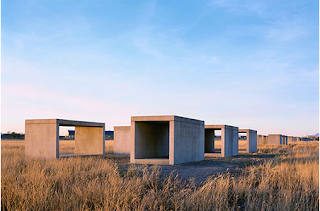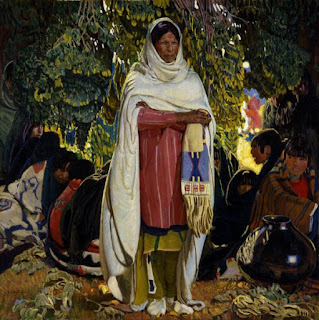During our class discussion we started out talking about museums and how they display art. We talked about how museums often get annoyed with contemporary artists that bring their large sculpture into the museums because they are hard to deal with and make space for. Private or public funding can be factors into artists providing a space for their work, and whether the art itself is private or public.

The conversation shifted into how we lose and gain different qualities with white museum gallery space, how interpretations change in different spaces. For some in the class, backgrounds were just noise to be ignored in lieu of the artwork, while for others it changed the entire atmosphere. Contemporary and modern works often get stuck in what the class identified as ‘white cubes’. However, there are other ways to create gallery spaces other than white walled spaces. Museums and galleries are starting to shift away from blank, neutral spaces and artists are trying to find ways to make the galleries more inviting rather than intimidating, but it can also be a distraction to the work itself.
Donald Judd, 100 untitled works in mill aluminum, 1982-1986, image from
Chinati Foundation
We then continued to discuss how Donald Judd made his own gallery space to accommodate his work in ways that traditional museums and galleries could not. We talked about how Judd’s work is so site-specific. Because of the past use of the buildings, it’s comparable to what it was used for in the past (grocery store). These buildings don’t change, but the space does. Past uses may or may not change views on how you interpret the work.
The Dan Flavin Art Institute, Bridgehampton, New York, part of the
Dia Foundation
We then transitioned into tackling about funding the art and whether or not having a patron is good or bad. We talked about how patrons ultimately have control, and you just have to find the right people to fund it so that the decisions align with yours. Ideally, you could get a grant so that you have no restrictions with your artwork. Because they are giving you the opportunity you couldn’t do on your own, you should respect their input. Without the Dia Foundation, Judd’s vision would probably never have happened. In the end, they just ran out of money.

We then proceeded to talk about Judd’s work as an artist and how Judd was able to contextualize his work however he wanted to with the way he finished these buildings for his works. We then started talking about minimalism and how it is seen in different ways, such as art that consumes your space and also art that has a lack of embellishment. The artists thought the term itself was derogatory. Judd uses repetition and that quality is usually not associated with minimalistic art pieces. Personal responses include ignoring minimalist artworks, or indulging into the detail given in and around the sculpture. He isn’t making personal art, but at the same time they are more than they appear with the fact that he chose to create his work in a certain space.
We then started to focus on minimalism in general and less about the function of Donald Judd as a minimalist. We discussed how the function of minimalist work gives you a new appreciation of form and color, more so than other works of art. It lets you see work for what it is as an object. Minimalism is a lie in that it keeps information from us, causing us to wonder what else could be added to it. The primary critique of Minimalism is that it’s not art because the artistic thing about it is external to the object. It evolves with the atmosphere and its environment. The objects are meaningless besides how you interact with them.
Then we started to talk about how Judd created an audience of fans by being so hard to get to, people pilgrimage over to this place to experience his work. It was designed specifically for the art and cares less about the audience. Being in the West, he doesn’t have to worry about being squished and having “neighbors”.
Destination: Marfa, TX, photo by Lara Kuykendall, 2015
We then got to talking about the debate between whether a work is art or not. We discussed if the artist has an argument for why it’s art, then it should be considered art. When we see art we have a preconceived notion of what art is and should be, when we see pieces that don’t have much physical labor it isn’t considered art. But a lot of minimalist art is mental labor with ideas. Art is internal. It makes us conscious of mark making, concept, and idea. The viewer has the ability to make something art through interpretation.
Uncrowded Marfa, TX, photo by Lara Kuykendall, 2015
Finally, we started to talk about how the impermanence of works changes your views with temporary artworks which can be distracting because of the crowds, whereas permanence means it’ll be less crowded. Crowds can affect the way we perceive artwork because you can’t take time with it to appreciate it. Some works are fun to see how other people interact with works, like sculptural artworks outside. It becomes more memorable when the experience is with others and can bring out the best in people. Some artists think about how crowds affect their work and sometimes control the amount of people around the work at once. Some pieces demand to be part of the architecture whereas others get away with being placed anywhere.
Alex Mikev, Aly Didier, Joan Seig, Molly Carpenter






















































